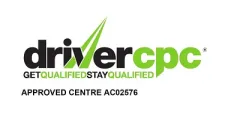Pre course entry requirements:
No previous experience required.
Who is this course for?
Professional HGV Drivers and Transport Managers who want the knowledge and skills to be certain they are securing loads safely and to understand their legal repsonsibilities for transporting a load on UK highways.
Introduction
Drivers and Transport Managers are responsible for ensuring a load stays secure during transit and doesn't become a danger to themselves or other road users.
Load security is no place for guesswork - throwing a lashing over a load, without knowing if it is strong enough or in good enough condition risks the load not being secured safely and could be potentially dangerous.
SpanSet Instructors are experienced at tailoring this course to customer's specific needs - please contact us for further details.
Course Details
SpanSet's innovative Load Restraint Appreciation and Inspection course, using state of the art training aids and including practical, hands-on experience, enables delegates to:
- Understand their responsibilities, complying with Road Traffic & Health & Safety Law
- Identify the causes of load shift & the forces acting on the load during transit
- Assess the load and the vehicle suitability for transporting the load
- Select the most suitable method of securing the load
- Understand the difference between Direct & Frictional Lashing
- Calculate the right number of lashings with the correct load rating to prevent the load from shifting.
- Carryout a pre-use check of chain & web lashing using inspection checklists
Equipment covered during training:
- Webbing lashings
- Chain lashings
- Lashing track
- Friction matting
- Load and lashing protection
- Load anchor points
Certification
On successful completion candidates will receive a certificate valid for five years.

Driver CPC
The European Union published the Driver CPC Directive in 2003, affecting all professional LGV and PCV drivers.
For new drivers it introduces an initial qualification, the Driver CPC (Certificate of Professional Competence), which increases the amount of knowledge that drivers need before they can drive. When combined with licence acquisition tests, the initial qualification includes a four hour theory and two hour driving practical test
All drivers, new and existing, must then undertake 35 hours of training every five years to ensure that their Drivers CPC is current. This is known as periodic training. Only courses that have been approved by the Driver and Vehicle Standards Agency will count towards the Periodic Training requirement.
SpanSet's Load Restraint Appreciation and Inspection Course counts towards 7hr Driver CPC training.
Additional Information
Further information on our training facilities, first aid provision, insurance etc are available upon request.
Please be aware that Regulations specify that a range of different subjects should be covered over the driver's 35 hours of training. DVSA will monitor training uploads and potentially take action against drivers and trainers if we identify unnecessary repetition of course attendance in a rolling 5-year period.